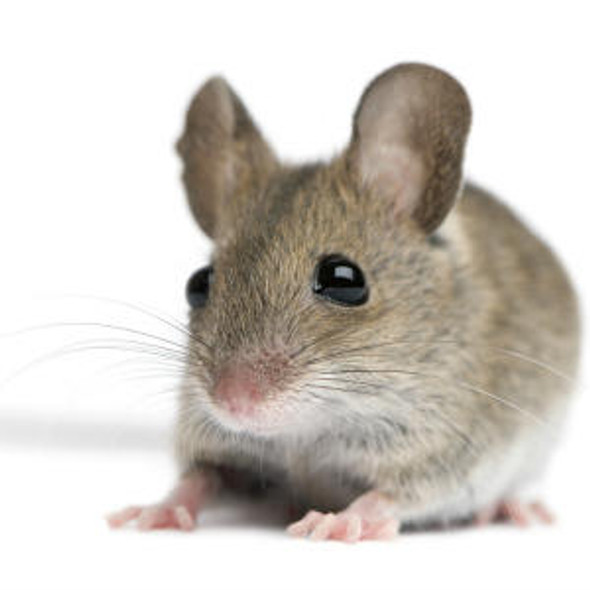Mouse CTSA Recombinant Protein (RPPB5806)
- SKU:
- RPPB5806
- Product type:
- Recombinant Protein
- Size:
- 10ug
- Species:
- Mouse
- Target:
- CTSA
- Synonyms:
- Lysosomalprotective protein (EC:34165)
- Carboxypeptidase C
- Carboxypeptidase
- CathepsinA
- Source:
- Sf9 Insect cells
- Uniprot:
- P16675
Description
| Product Name: | Mouse CTSA Recombinant Protein |
| Product Code: | RPPB5806 |
| Size: | 10µg |
| Species: | Mouse |
| Target: | CTSA |
| Synonyms: | Lysosomalprotective protein (EC:3.4.16.5), Carboxypeptidase C, Carboxypeptidase, CathepsinA, Protective protein cathepsin A, PPCA, Protective protein forbeta-galactosidase. |
| Source: | Sf9 Insect cells |
| Physical Appearance: | Sterile filtered colorless solution. |
| Formulation: | CTSA protein solution (0.5mg/ml) contains phosphate buffered saline (pH7.4) and 10% glycerol. |
| Stability: | Store at 4°C if entire vial will be used within 2-4 weeks. Store, frozen at -20°C for longer periods of time. For long term storage it is recommended to add a carrier protein (0.1% HSA or BSA).Avoid multiple freeze-thaw cycles. |
| Purity: | Greater than 90.0% asdetermined by SDS-PAGE. |
| Amino Acid Sequence: | APDQDEIDCLPGLAKQPSFR QYSGYLRASD SKHFHYWFVE SQNDPKNSPV VLWLNGGPGC SSLDGLLTEH GPFLIQPDGVTLEYNPYAWN LIANVLYIES PAGVGFSYSD DKMYVTNDTE VAENNYEALK DFFRLFPEYK DNKLFLTGESYAGIYIPTLA VLVMQDPSMN LQGLAVGNGL ASYEQNDNSL VYFAYYHGLL GNRLWTSLQT HCCAQNKCNFYDNKDPECVN NLLEVSRIVG KSGLNIYNLY APCAGGVPGR HRYEDTLVVQ DFGNIFTRLP LKRRFPEALMRSGDKVRLDP PCTNTTAPSN YLNNPYVRKA LHIPESLPRW DMCNFLVNLQ YRRLYQSMNS QYLKLLSSQKYQILLYNGDV DMACNFMGDE WFVDSLNQKM EVQRRPWLVD YGESGEQVAG FVKECSHITF LTIKGAGHMVPTDKPRAAFT MFSRFLNKEP YVEHHHHHH |
Cathepsin-A (CTSA) is a protective protein which is crucial for both the activity of beta-galactosidase and neuraminidase, CTSA associates with these enzymes and exerts a protective function required for their stability and activity. The CTSA protein is also a carboxypeptidase and can deamidate tachykinins. CTSA is a component of the lysosomal multienzyme complex along with beta-galactosidase and sialidase Neu1. CTSA is a multicatalytic enzyme with deamidase and esterase in addition to carboxypeptidase activities.
CTSA produced in Sf9 Insect cells is a single, glycosylated polypeptide chain containing 459 amino acids (24-474 a.a.) and having a molecular mass of 52.4kDa (Molecular size on SDS-PAGE will appear at approximately 50-70kDa).CTSA is expressed with an 8 amino acid His tag at C-Terminus and purified by proprietary chromatographic techniques.
| UniProt Protein Function: | CTSA: Protective protein appears to be essential for both the activity of beta-galactosidase and neuraminidase, it associates with these enzymes and exerts a protective function necessary for their stability and activity. This protein is also a carboxypeptidase and can deamidate tachykinins. Defects in CTSA are the cause of galactosialidosis (GSL). A lysosomal storage disease associated with a combined deficiency of beta-galactosidase and neuraminidase, secondary to a defect in cathepsin A. All patients have clinical manifestations typical of a lysosomal disorder, such as coarse facies, cherry red spots, vertebral changes, foam cells in the bone marrow, and vacuolated lymphocytes. Three phenotypic subtypes are recognized. The early infantile form is associated with fetal hydrops, edema, ascites, visceromegaly, skeletal dysplasia, and early death. The late infantile type is characterized by hepatosplenomegaly, growth retardation, cardiac involvement, and a normal or mildly affected mental state. The juvenile/adult form is characterized by myoclonus, ataxia, angiokeratoma, mental retardation, neurologic deterioration, absence of visceromegaly, and long survival. Belongs to the peptidase S10 family.Protein type: Mitochondrial; EC 3.4.16.5; Protease; Endoplasmic reticulumCellular Component: nucleoplasm; membrane; mitochondrion; intracellular membrane-bound organelle; lysosomeMolecular Function: peptidase activity; serine carboxypeptidase activity; protein binding; hydrolase activity; carboxypeptidase activityBiological Process: proteolysis |
| UniProt Protein Details: | |
| NCBI Summary: | This gene encodes a glycoprotein with deamidase, esterase and carboxypeptidase activities. The encoded protein associates with and provides a protective function to the lysosomal enzymes beta-galactosidase and neuraminidase. Deficiency of the related gene in humans results in galactosialidosis. The proprotein is processed into two shorter chains. Alternatively spliced transcript variants encoding multiple isoforms have been observed for this gene. [provided by RefSeq, Jan 2013] |
| UniProt Code: | P16675 |
| NCBI GenInfo Identifier: | 84042525 |
| NCBI Gene ID: | 19025 |
| NCBI Accession: | NP_032932.2 |
| UniProt Secondary Accession: | P16675 |
| UniProt Related Accession: | P16675 |
| Molecular Weight: | 55,726 Da |
| NCBI Full Name: | lysosomal protective protein isoform a preproprotein |
| NCBI Synonym Full Names: | cathepsin A |
| NCBI Official Symbol: | Ctsa |
| NCBI Official Synonym Symbols: | PPCA; Ppgb; AU019505 |
| NCBI Protein Information: | lysosomal protective protein; carboxypeptidase C; carboxypeptidase L; protective protein cathepsin A; protective protein for beta-galactosidase |
| UniProt Protein Name: | Lysosomal protective protein |
| UniProt Synonym Protein Names: | |
| Protein Family: | Lysosomal protective protein |
| UniProt Gene Name: | Ctsa |
| UniProt Entry Name: | G3X8T3_MOUSE |










